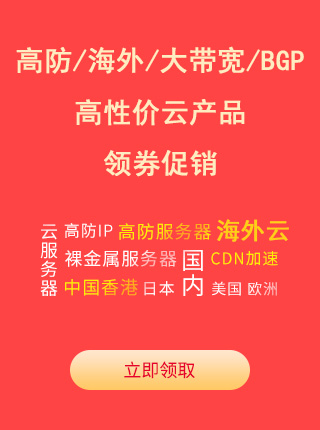Python数字图像处理操作及实例是什么
Admin 2022-08-11 群英技术资讯 748 次浏览
 今天就跟大家聊聊有关“Python数字图像处理操作及实例是什么”的内容,可能很多人都不太了解,为了让大家认识和更进一步的了解,小编给大家总结了以下内容,希望这篇“Python数字图像处理操作及实例是什么”文章能对大家有帮助。
今天就跟大家聊聊有关“Python数字图像处理操作及实例是什么”的内容,可能很多人都不太了解,为了让大家认识和更进一步的了解,小编给大家总结了以下内容,希望这篇“Python数字图像处理操作及实例是什么”文章能对大家有帮助。一、实验内容
对于下面这幅图像,编程实现染色体计数,并附简要处理流程说明。

二、实验步骤
1.中值滤波
2.图像二值化
3.膨胀图像
4.腐蚀图像
5.计算光影背景
6.移除背景
7.检测染色体
三、代码
import cv2
import numpy as np
# 计算光影背景
def calculateLightPattern(img4):
h, w = img4.shape[0], img4.shape[1]
img5 = cv2.blur(img4, (int(w/3), int(w/3)))
return img5
# 移除背景
def removeLight(img4, img5, method):
if method == 1:
img4_32 = np.float32(img4)
img5_32 = np.float32(img5)
ratio = img4_32 / img5_32
ratio[ratio > 1] = 1
aux = 1 - ratio
# 按比例转换为8bit格式
aux = aux * 255
aux = np.uint8(aux)
else:
aux = img5 - img4
return aux
def ConnectedComponents(aux):
num_objects, labels = cv2.connectedComponents(aux)
if num_objects < 2:
print("connectedComponents未检测到染色体")
return
else:
print("connectedComponents检测到染色体数量为:", num_objects - 1)
output = np.zeros((aux.shape[0], aux.shape[1], 3), np.uint8)
for i in range(1, num_objects):
mask = labels == i
output[:, :, 0][mask] = np.random.randint(0, 255)
output[:, :, 1][mask] = np.random.randint(0, 255)
output[:, :, 2][mask] = np.random.randint(0, 255)
return output
def ConnectedComponentsStats(aux):
num_objects, labels, status, centroids = cv2.connectedComponentsWithStats(aux)
if num_objects < 2:
print("connectedComponentsWithStats未检测到染色体")
return
else:
print("connectedComponentsWithStats检测到染色体数量为:", num_objects - 1)
output = np.zeros((aux.shape[0], aux.shape[1], 3), np.uint8)
for i in range(1, num_objects):
mask = labels == i
output[:, :, 0][mask] = np.random.randint(0, 255)
output[:, :, 1][mask] = np.random.randint(0, 255)
output[:, :, 2][mask] = np.random.randint(0, 255)
return output
def FindContours(aux):
contours, hierarchy = cv2.findContours(aux, cv2.RETR_EXTERNAL, cv2.CHAIN_APPROX_SIMPLE)
if len(contours) == 0:
print("findContours未检测到染色体")
return
else:
print("findContours检测到染色体数量为:", len(contours))
output = np.zeros((aux.shape[0], aux.shape[1], 3), np.uint8)
for i in range(len(contours)):
cv2.drawContours(
output,
contours,
i,
(np.random.randint(0, 255),
np.random.randint(0, 255),
np.random.randint(0, 255)), 2)
return output
# 读取图片
img = cv2.imread('img.png', 0)
pre_img = cv2.cvtColor(img, cv2.COLOR_BGR2RGB) # 二值化函数
# 第一步:中值滤波
# 中值滤波
img1 = cv2.medianBlur(img, 3)
# 显示并保存图片
cv2.imshow('gray', img)
cv2.imshow('medianBlur', img1)
cv2.imwrite('medianBlur.jpg', img1)
# 第二步:图像二值化
# 图像二值化
ret, img2 = cv2.threshold(img1, 140, 255, 0, img1) # 二值化函数
# 显示并保存图片
cv2.imshow('threshold', img2)
cv2.imwrite('threshold.jpg', img2)
# 第三步:膨胀图像
dilate_kernel = np.ones((3, 3), np.uint8)
img3 = cv2.dilate(img2, dilate_kernel)
# 显示并保存图片
cv2.imshow('dilate', img3)
cv2.imwrite('dilate.jpg', img3)
# 第四步:腐蚀图像
erode_kernel = np.ones((7, 7), np.uint8)
img4 = cv2.erode(img3, erode_kernel)
# 显示并保存图片
cv2.imshow('erode', img4)
cv2.imwrite('erode.jpg', img4)
# 第五步:计算光影背景
img5 = calculateLightPattern(img4)
# 显示并保存图片
cv2.imshow('LightPattern', img5)
cv2.imwrite('LightPattern.jpg', img5)
# 第六步:移除背景
aux = removeLight(img4, img5, 1)
# 显示并保存图片
cv2.imshow('removeLight', aux)
cv2.imwrite('removeLight.jpg', aux)
# 第七步:检测轮廓
output1 = ConnectedComponents(aux)
output2 = ConnectedComponentsStats(aux)
output3 = FindContours(aux)
# 显示并保存图片
cv2.imshow('connectedComponents', output1)
cv2.imwrite('connectedComponents.jpg', output1)
cv2.imshow('connectedComponentsWithStats', output2)
cv2.imwrite('connectedComponentsWithStats.jpg', output2)
cv2.imshow('findContours', output3)
cv2.imwrite('findContours.jpg', output3)
cv2.waitKey(0)
四、结果
1.中值滤波

2.图像二值化

3.膨胀图像

4.腐蚀图像

5.计算光影背景

6.移除背景

7.检测染色体
(1)connectedComponents.jpg

(2)connectedComponentsWithStats.jpg

(3)findContours.jpg

染色体个数为46
到此这篇关于“Python数字图像处理操作及实例是什么”的文章就介绍到这了,更多相关内容请搜索群英网络以前的文章或继续浏览下面的相关文章,希望大家以后多多支持群英网络!

免责声明:本站发布的内容(图片、视频和文字)以原创、转载和分享为主,文章观点不代表本网站立场,如果涉及侵权请联系站长邮箱:mmqy2019@163.com进行举报,并提供相关证据,查实之后,将立刻删除涉嫌侵权内容。
猜你喜欢
-
Python range()函数如何使用,有哪些使用要注意
Python内置函数-range() 函数。Python3 range() 函数返回的是一个可迭代对象(类型是对象),而不是列表类型, 所以打印的时候不会打印列表。
-
Python pow()函数能实现什么计算,具体用法是怎样
Python内置函数-pow() 函数。内置和math模板都有pow() 函数,下面分别详细讲解。
-
Matplotlib中文设置乱码的情况怎么办,该如何解决好
最近手头有公司的数据资源,正好拿来练习了matplotlib的画图,期间碰到一个坑,就是中文在图表中显示的是方框,下面这篇文章主要给大家介绍了关于Matplotlib中文乱码的两种详细解决方案,需要的朋友可以参考下
-
python怎么样实现自定义日志?
这篇文章给大家分享的是python实现自定义日志的内容。小编觉得挺实用的,而且实现步骤和过程也不难,因此分享给大家做个参考,接下来一起跟随小编看看吧。
-
Python怎样设计串口之间通信的程序
在嵌入式开发中我们经常会用到串口,串口通信简单,使用起来方便,且适用场景多。本文为大家准备了Python实现串口通信的示例代码,需要的可以参考一下
成为群英会员,开启智能安全云计算之旅
立即注册关注或联系群英网络
7x24小时售前:400-678-4567
7x24小时售后:0668-2555666

24小时QQ客服

群英微信公众号
CNNIC域名投诉举报处理平台
服务电话:010-58813000
服务邮箱:service@cnnic.cn
投诉与建议:0668-2555555
Copyright © QY Network Company Ltd. All Rights Reserved. 2003-2020 群英 版权所有
增值电信经营许可证 : B1.B2-20140078 粤ICP备09006778号 域名注册商资质 粤 D3.1-20240008



